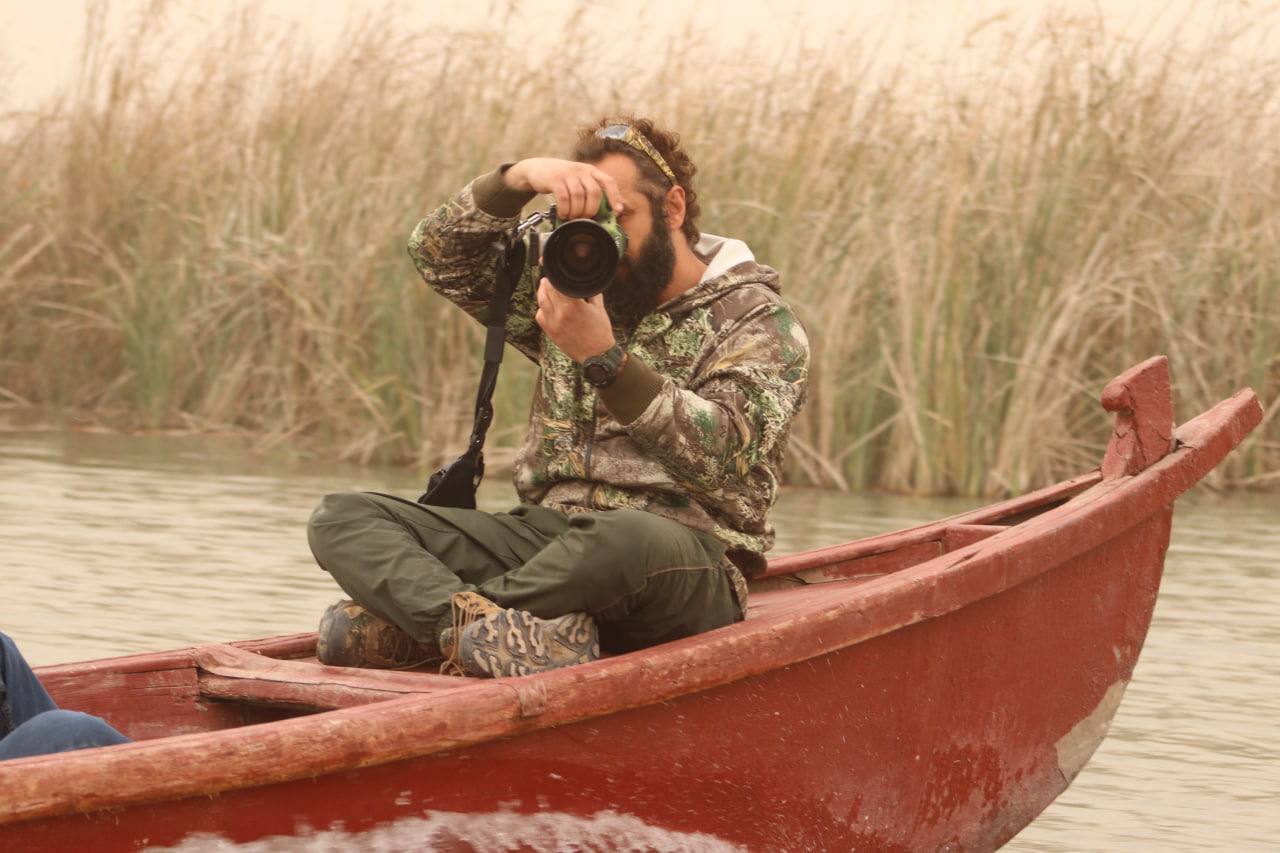A Glance at Iraq’s Biodiversity and Endangered Species with Dr. Omar Al-Sheikhly
June 5, 2023

What is biological diversity?
Biological diversity, or biodiversity, refers to the multitude of life forms on Earth. It includes not only a wide range of organisms—from microorganisms like bacteria and viruses, to larger, more complex organisms such as the blue whale—but also the genetic diversity within and between these species. Furthermore, biodiversity also considers the variety of ecosystems these species inhabit. This diversity creates a complex, interconnected network of biological relationships, forming intricate and dynamic ecosystems within our environment.
Why is it important to preserve biodiversity?
Preserving biological diversity is essential because it contributes significantly to economic vitality and environmental resilience. The more diverse an ecosystem, the greater the potential for economic activities such as agriculture and biomass production. Therefore, a country or region can harness its biodiversity to strengthen its green economy. Thus, it becomes necessary to preserve biodiversity to maintain both economic and ecological stability within a given area or country.
What are the factors that affect biodiversity?
Biodiversity is influenced by a myriad of factors, both natural and anthropogenic. Natural phenomena like climate change, hurricanes, and volcanic eruptions significantly contribute to biodiversity loss, particularly in regions severely affected by these conditions. For example, extreme weather events and natural disasters such as the forest fires in Australia and the Amazon have had devastating impacts on local biodiversity.
On the other hand, human activities pose significant threats to biodiversity. The International Union for Conservation of Nature (IUCN) has identified various categories of threats, including habitat loss due to agriculture and urbanization, overexploitation through activities like hunting and fishing, pollution, invasive alien species, and climate change resulting from human actions such as the burning of fossil fuels and deforestation. Infrastructure development, including the construction of dams and power stations, can also have significant impacts on biodiversity by altering habitats and disrupting ecosystems. Therefore, preserving biodiversity requires addressing both natural and human-induced factors that threaten its existence.

Are there endangered species in Iraq?
Iraq boasts a unique biodiversity, particularly in its southern region, it is home to nine of the most important ecological ecoregions in the Middle East. Out of these nine, two are facing the threat of extinction.
The country is home to a variety of endangered species of flora and fauna, some of which are unique to Iraq. These include the endemic Iraq’s Smooth-coated Otter Lutrogale perspicillata maxwelli and the Long-tailed Nesokia Nesokia bunnii, both listed on the IUCN Red List of Threatened Species, as well as the Euphrates Softshell Turtle Rafetus Euphraticus and the Basra Reed Warbler Acrocephalus griseldis. These species predominantly inhabit the upper and sometimes lower basins of the Euphrates and Tigris rivers. Their high biological value contributes to the recognition of many regions in southern Iraq as international conservation areas, under the Ramsar Convention.
In the western regions of the country, there are various endangered species, including the Haditha Blind Cave Fish Typhlogarra widdowsoni, which is critically endangered and unique to this area. The northern areas of Iraq are also home to several endangered plant and animal species such as the Kurdistan Newt Neurergus derjugini, which is critically endangered, and the Persian Leopard Panthera pardus, an apex predator found in the northern mountains of Iraq. Additionally, a variety of endangered bird species inhabit these areas, notably the Egyptian Vulture, which is listed as endangered on the IUCN Red List anf the recently discovered, the rare and elusive Spider-tailed Viper (Pseudocerastes Urarachnoides) in the foothills of eastern Iraq.

What can Iraqis (people and government) do to contribute to the preservation of biodiversity?
Biodiversity in Iraq is under threat from several factors, including but not limited to, unregulated hunting and overfishing. These challenges have been identified by the International Union for Conservation of Nature (IUCN) and various academic studies on Iraq's biodiversity.
To counteract these threats, the collective efforts of Iraqis are vital, beginning with raising awareness about biodiversity conservation through educational institutions, particularly among the younger generations. Collaboration with relevant government ministries to control and regulate incidents of unregulated hunting is also necessary. Recent events, such as the abduction of wolf pups from various regions for use as pets, have led to a decline in wolf populations, resulting in an increase in pest species like wild pigs, which pose significant economic threats to farming.
Furthermore, traditional medicinal practices and myths, such as the extraction of oils from the Euphrates Softshell Turtle and canine teeth from Grey Wolves, have contributed to a decline in the number of these creatures. Preserving biodiversity calls for a united front among Iraqis, supported by the right laws and regulations to curb such destructive activities. Given its commitment to the Convention on Biological Diversity (CBD), the Iraqi government should spearhead these initiatives.

 Locations
Locations